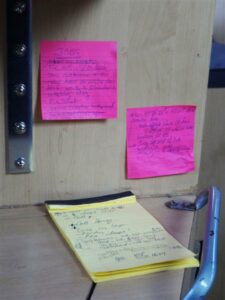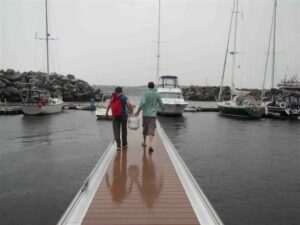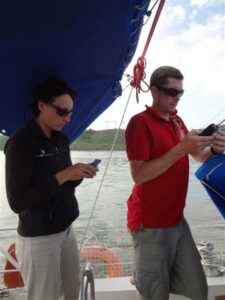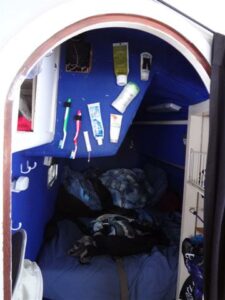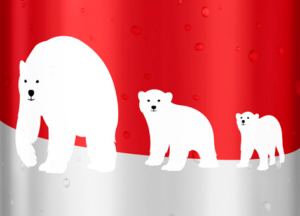We arrive at Blanc Sablon on the night of July 2.
Each crew member has a 3 hour shift every 6 hours. Cooking is done in turns, small jobs here and there too. We also become familiar with everyone’s little habits: hot water at the beginning of each shift for Pascale (and candy on the bridge), two teaspoons (and no more!) of powdered milk in Grant’s tea, A half-ball of jasmine tea (and no more either!) in mine. At the end of each shift, we fill the logbook, describing the situation at each specific time (course, compass heading, wind conditions, sail or motor, remaining distance, etc.), everything is compiled.
Madame Velcro continues her rampage. The cereal box is her latest victim. This week, we have the appearance of “Mr. Spiderman ‘(Grant). At any time of day or night, he emerges from his berth at the slightest suspicious noise.
Returning to the land means the return of on board lists of things to buy, do, find, repair, consolidate, rebuild, improve… The boat is full of sticky notes.
Our departure from Blanc Sablon depends on the weather for the crossing. We look forward to hitting the open ocean (and getting out of the fog!) Then, to reach Greenland and welcome on board the WWF team and scientists.
